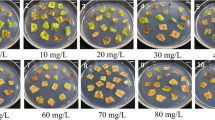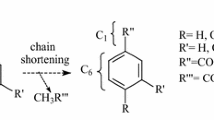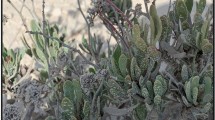Abstract
Peucedanum praeruptorum Dunn is a well-known Chinese medicinal plant that mainly contains coumarins derived from the phenylpropanoid pathway. Phenylalanine ammonia-lyase (PAL) is the first key enzyme in the phenylpropanoid pathway and catalyzes the formation of trans-cinnamic acid (t-CA) by L-phenylalanine (L-Phe). Two PALs (PpPAL1 and PpPAL2) were cloned and verified in this study, demonstrating that there is a multi-gene family of PAL in P. praeruptorum. PpPAL1 (GenBank accession number: MZ355581) and PpPAL2 (GenBank accession number: MZ355582) contained open reading frame of 2157 bp encoding 718 amino acids and 2118 bp encoding 705 amino acids, respectively. BLAST analysis showed that the amino acid sequences of two novel PpPALs were highly similar to other known plant PAL proteins. To confirm their functions, the two PpPALs were cloned into the pET-30a vector and expressed in Escherichia coli Transetta (DE3). The enzymatic activity of the two PAL recombinant proteins was subsequently detected. They both catalyzed the conversion of L-Phe to t-CA, but the activity of PpPAL2 was higher than that of PpPAL1. Phylogenetic results revealed that PpPAL1 and PpPAL2 were classified into different clusters. In addition, tissue-specific expression of the two PpPALs was different of both non-bolting and bolting plants. These results might be useful for future studies regarding phenylpropanoid biosynthesis and improving the content of medicinal components in P. praeruptorum.







Similar content being viewed by others
References
Arsenov D, Župunski M, Pajević S, Nemeš I, Simin N, Alnuqaydan AM, Watson M, Aloliqi AA, Mimica-Dukić N (2021) Roots of Apium graveolens and Petroselinum crispum-insight into phenolic status against toxicity level of trace elements. Plants 10:1785. https://doi.org/10.3390/plants10091785
Barros J, Serrani-Yarce JC, Chen F, Baxter D, Venables BJ, Dixon RA (2016) Role of bifunctional ammonia-lyase in grass cell wall biosynthesis. Nat Plants 2:16050. https://doi.org/10.1038/nplants.2016.50
Chang H, Okada Y, Okuyama T, Tu P (2007) 1H and 13C NMR assignments for two new angular furanocoumarin glycosides from Peucedanum praeruptorum. Magn Reson Chem 45:611–614. https://doi.org/10.1002/mrc.2005
Chen Y, Li F, Tian L, Huang M, Deng R, Li X, Chen W, Wu P, Li M, Jiang H, Wu G (2017) The Phenylalanine Ammonia Lyase Gene LjPAL1 Is involved in plant defense responses to pathogens and plays diverse roles in Lotus japonicus-Rhizobium symbioses. Mol Plant Microbe Interact 30:739–753. https://doi.org/10.1094/MPMI-04-17-0080-R
Chu S, Chen L, Xie H, Xie J, Zhao Y, Tong Z, Xu R, Peng H (2020) Comparative analysis and chemical profiling of different forms of Peucedani Radix. J Pharm Biomed Anal 189:113410. https://doi.org/10.1016/j.jpba.2020.113410
Cochrane FC, Davin LB, Lewis NG (2004) The Arabidopsis phenylalanine ammonia lyase gene family: kinetic characterization of the four PAL isoforms. Phytochemistry 65:1557–1564. https://doi.org/10.1016/j.phytochem.2004.05.006
Committee for the Pharmacopoeia of P.R. China (2020) Pharmacopoeia of P.R. China, Part I. China medical science and technology press, Beijing
Dixon RA, Paiva NL (1995) Stress-induced phenylpropanoid metabolism. Plant Cell 7:1085–1097. https://doi.org/10.1105/tpc.7.7.1085
Dong CJ, Shang QM (2013) Genome-wide characterization of phenylalanine ammonia-lyase gene family in watermelon (Citrullus lanatus). Planta 238:35–49. https://doi.org/10.1007/s00425-013-1869-1
Han BX, Mao J, Yan H, Ji ZW, Chen NF (2012) Effects of cultivation and flowering on the chemical composition and efficacy of radix peucedani. J Med Plant Res 6:2914–2919
He Y, Zhong X, Jiang X, Cong H, Sun H, Qiao F (2020) Characterisation, expression and functional analysis of PAL gene family in Cephalotaxus hainanensis. Plant Physiol Biochem 156:461–470. https://doi.org/10.1016/j.plaphy.2020.09.030
Huang J, Gu M, Lai Z, Fan B, Shi K, Zhou YH, Yu JQ, Chen Z (2010) Functional analysis of the Arabidopsis PAL gene family in plant growth, development, and response to environmental stress. Plant Physiol 153:1526–1538. https://doi.org/10.1104/pp.110.157370
Jin Q, Yao Y, Cai Y, Lin Y (2013) Molecular cloning and sequence analysis of a phenylalanine ammonia-lyase gene from dendrobium. PLoS ONE 8:e62352. https://doi.org/10.1371/journal.pone.0062352
Jones D (1984) Phenylalanine ammonia-lyase: regulation of its induction, and its role in plant development. Phytochemisty 23:1349–1359
Kai K, Mizutani M, Kawamura N, Yamamoto R, Tamai M, Yamaguchi H, Sakata K, Shimizu B (2008) Scopoletin is biosynthesized via ortho-hydroxylation of feruloyl CoA by a 2-oxoglutarate-dependent dioxygenase in Arabidopsis thaliana. Plant J 55:989–999. https://doi.org/10.1111/j.1365-313X.2008.03568.x
Khakdan F, Alizadeh H, Ranjbar M (2018) Molecular cloning, functional characterization and expression of a drought inducible phenylalanine ammonia-lyase gene (ObPAL) from Ocimum basilicum L. Plant Physiol Biochem 130:464–472. https://doi.org/10.1016/j.plaphy.2018.07.026
Kumar A, Ellis BE (2001) The phenylalanine ammonia-lyase gene family in raspberry. Structure, expression, and evolution. Plant Physiol 127:230–239. https://doi.org/10.1104/pp.127.1.230
Lee BK, Park MR, Srinivas B, Chun JC, Kwon IS, Chung IM, Yoo NH, Choi KG, Yun SJ (2003) Induction of phenylalanine ammonia-lyase gene expression by paraquat and stress-related hormones in Rehmannia glutinosa. Mol Cells 6(1):34–39
Lee J, Lee YJ, Kim J, Bang OS (2015) Pyranocoumarins from root extracts of Peucedanum praeruptorum Dunn with multidrug resistance reversal and anti-inflammatory activities. Molecules 20:20967–20978. https://doi.org/10.3390/molecules201219738
Lee AR, Chun JM, Lee AY, Kim HS, Gu GJ, Kwon BI (2017) Reduced allergic lung inflammation by root extracts from two species of Peucedanum through inhibition of Th2 cell activation. J Ethnopharmacol 196:75–83. https://doi.org/10.1016/j.jep.2016.12.015
Li CL, Bai YC, Chen H, Zhao HX, Shao JR, Wu Q (2012) Cloning, characterization and functional analysis of a phenylalanine ammonia-lyase gene (FtPAL) from Fagopyrum tataricum Gaertn. Plant Mol Biol Rep 30:1172–1182
Liang T, Yue W, Li Q (2010) Chemopreventive effects of Peucedanum praeruptorum DUNN and its major constituents on SGC7901 gastric cancer cells. Molecules 15:8060–8071. https://doi.org/10.3390/molecules15118060
Liu CM, Shen HT, Lin YA, Yu YL, Chen YS, Liu CJ, Hsieh YH (2020) Antiproliferative and antimetastatic effects of praeruptorin C on human non-small cell lung cancer through inactivating ERK/CTSD signalling pathways. Molecules 25:1625. https://doi.org/10.3390/molecules25071625
Ma W, Wu M, Wu Y, Ren Z, Zhong Y (2013) Cloning and characterisation of a phenylalanine ammonia-lyase gene from Rhus chinensis. Plant Cell Rep 32:1179–1190. https://doi.org/10.1007/s00299-013-1413-6
Ma RF, Liu QZ, Xiao Y, Zhang L, Li Q, Yin J, Chen WS (2016) The phenylalanine ammonia-lyase gene family in Isatis indigotica Fort.: molecular cloning, characterization, and expression analysis. Chin J Nat Med 14:801–812. https://doi.org/10.1016/S1875-5364(16)30097-8
Poppe L, Rétey J (2005) Friedel-Crafts-type mechanism for the enzymatic elimination of ammonia from histidine and phenylalanine. Angew Chem Int Ed Engl 44:3668–3688. https://doi.org/10.1002/anie.200461377
Raes J, Rohde A, Christensen JH, Van de Peer Y, Boerjan W (2003) Genome-wide characterization of the lignification toolbox in Arabidopsis. Plant Physiol 133:1051–1071. https://doi.org/10.1104/pp.103.026484
Song Y, Jing W, Yan R, Wang Y (2015) Research progress of the studies on the roots of Peucedanum praeruptorum Dunn (Peucedani radix). Pak J Pharm Sci 28:71–81
Song C, Li X, Jia B, Liu L, Ou J, Han B (2021) De novo transcriptome sequencing coupled with co-expression analysis reveal the transcriptional regulation of key genes involved in the formation of active ingredients in Peucedanum praeruptorum Dunn under bolting period. Front Genet 12:683037. https://doi.org/10.3389/fgene.2021.683037
Sui Z, Luo J, Yao R, Huang C, Zhao Y, Kong L (2019) Functional characterization and correlation analysis of phenylalanine ammonia-lyase (PAL) in coumarin biosynthesis from Peucedanum praeruptorum Dunn. Phytochemistry 158:35–45. https://doi.org/10.1016/j.phytochem.2018.11.006
Vogt T (2010) Phenylpropanoid biosynthesis. Mol Plant 3:2–20. https://doi.org/10.1093/mp/ssp106
Wanner LA, Li G, Ware D, Somssich IE, Davis KR (1995) The phenylalanine ammonia-lyase gene family in Arabidopsis thaliana. Plant Mol Biol 27:327–338. https://doi.org/10.1007/BF00020187
Watts KT, Mijts BN, Lee PC, Manning AJ, Schmidt-Dannert C (2006) Discovery of a substrate selectivity switch in tyrosine ammonia-lyase, a member of the aromatic amino acid lyase family. Chem Biol 13:1317–1326. https://doi.org/10.1016/j.chembiol.2006.10.008
Wu Z, Gui S, Wang S, Ding Y (2014) Molecular evolution and functional characterisation of an ancient phenylalanine ammonia-lyase gene (NnPAL1) from Nelumbo nucifera: novel insight into the evolution of the PAL family in angiosperms. BMC Evol Biol 14:100. https://doi.org/10.1186/1471-2148-14-100
Wu Y, Wang W, Li Y, Dai X, Ma G, Xing D, Zhu M, Gao L, Xia T (2017) Six phenylalanine ammonia-lyases from Camellia sinensis: evolution, expression, and kinetics. Plant Physiol Biochem 118:413–421. https://doi.org/10.1016/j.plaphy.2017.06.030
Xiong YY, Wu FH, Wang JS, Li J, Kong LY (2012) Attenuation of airway hyperreactivity and T helper cell type 2 responses by coumarins from Peucedanum praeruptorum Dunn in a murine model of allergic airway inflammation. J Ethnopharmacol 141:314–321. https://doi.org/10.1016/j.jep.2012.02.037
Yu G, Duan J, Yan H, Song B, He Z (2011) cDNA-AFLP analysis of gene expression differences between the flower bud and sprout-shoot apical meristem of Angelica sinensis (Oliv.) Diels. Genet Mol Biol 34:274–279. https://doi.org/10.1590/s1415-47572011000200018
Yu PJ, Jin H, Zhang JY, Wang GF, Li JR, Zhu ZG, Tian YX, Wu SY, Xu W, Zhang JJ, Wu SG (2012) Pyranocoumarins isolated from Peucedanum praeruptorum Dunn suppress lipopolysaccharide-induced inflammatory response in murine macrophages through inhibition of NF-κB and STAT3 activation. Inflammation 35:967–977. https://doi.org/10.1007/s10753-011-9400-y
Yu CL, Yu YL, Yang SF, Hsu CE, Lin CL, Hsieh YH, Chiou HL (2021) Praeruptorin A reduces metastasis of human hepatocellular carcinoma cells by targeting ERK/MMP1 signaling pathway. Environ Toxicol 36:540–549. https://doi.org/10.1002/tox.23059
Zhang C, Wang X, Zhang F, Dong L, Wu J, Cheng Q, Qi D, Yan X, Jiang L, Fan S, Li N, Li D, Xu P, Zhang S (2017) Phenylalanine ammonia-lyase2.1 contributes to the soybean response towards Phytophthora sojae infection. Sci Rep 7:7242. https://doi.org/10.1038/s41598-017-07832-2
Zhang F, Ren J, Zhan J (2021) Identification and characterization of an efficient phenylalanine ammonia-lyase from photorhabdus luminescens. Appl Biochem Biotechnol 193:1099–1115. https://doi.org/10.1007/s12010-020-03477-6
Zhao Y, Luo J, Xu S, Wang W, Liu T, Han C, Chen Y, Kong L (2016) Selection of reference genes for gene expression normalization in Peucedanum praeruptorum Dunn under abiotic stresses, hormone treatments and different tissues. PLoS ONE 11:e0152356. https://doi.org/10.1371/journal.pone.0152356
Zhao Y, Jian X, Wu J, Huang W, Huang C, Luo J, Kong L (2019) Elucidation of the biosynthesis pathway and heterologous construction of a sustainable route for producing umbelliferone. J Biol Eng 13:44. https://doi.org/10.1186/s13036-019-0174-3
Zhu Q, Dabi T, Beeche A, Yamamoto R, Lawton MA, Lamb C (1995) Cloning and properties of a rice gene encoding phenylalanine ammonia-lyase. Plant Mol Biol 29:535–550. https://doi.org/10.1007/BF00020983
Zhu Q, Xie X, Lin H, Sui S, Shen R, Yang Z, Lu K, Li M, Liu YG (2015) Isolation and functional characterization of a phenylalanine ammonia-lyase gene (SsPAL1) from Coleus (Solenostemon scutellarioides (L.) Codd). Molecules 20:16833–16851. https://doi.org/10.3390/molecules200916833
Funding
This research was supported by the National Natural Science Foundation of China (81973432, 81803675), CAMS Innovation Fund for Medical Sciences (2019-I2M-5-065), Innovation Team and Talents Cultivation Program of National Administration of Traditional Chinese Medicine (ZYYCXTD-D-202005), Key project at central government level: The ability establishment of sustainable use for valuable Chinese medicine resources (2060302), Anhui Provincial Natural Science Foundation (2208085QH269) and Talent Supporting Program of Anhui University of Chinese Medicine (2022rcyb020).
Author information
Authors and Affiliations
Contributions
HSP and SSC conceived and designed the study, and critically revised the manuscript. ZZT and JX performed the experiments, analyzed the data, and drafted the manuscript. LPZ, JXW and MZY participated in study design, study implementation, and manuscript revision. All authors read and approved the final manuscript.
Corresponding authors
Ethics declarations
Conflict of interest
The authors declare that they have no conflict of interest.
Informed consent
Written informed consent was obtained from all participants included in the study.
Additional information
Publisher's Note
Springer Nature remains neutral with regard to jurisdictional claims in published maps and institutional affiliations.
Supplementary Information
Below is the link to the electronic supplementary material.
Rights and permissions
Springer Nature or its licensor holds exclusive rights to this article under a publishing agreement with the author(s) or other rightsholder(s); author self-archiving of the accepted manuscript version of this article is solely governed by the terms of such publishing agreement and applicable law.
About this article
Cite this article
Tong, Z., Xie, J., Yin, M. et al. Cloning, characterization and prokaryotic expression analysis of two phenylalanine ammonia-lyase genes from Peucedanum praeruptorum Dunn. Braz. J. Bot 45, 897–907 (2022). https://doi.org/10.1007/s40415-022-00826-z
Received:
Revised:
Accepted:
Published:
Issue Date:
DOI: https://doi.org/10.1007/s40415-022-00826-z




